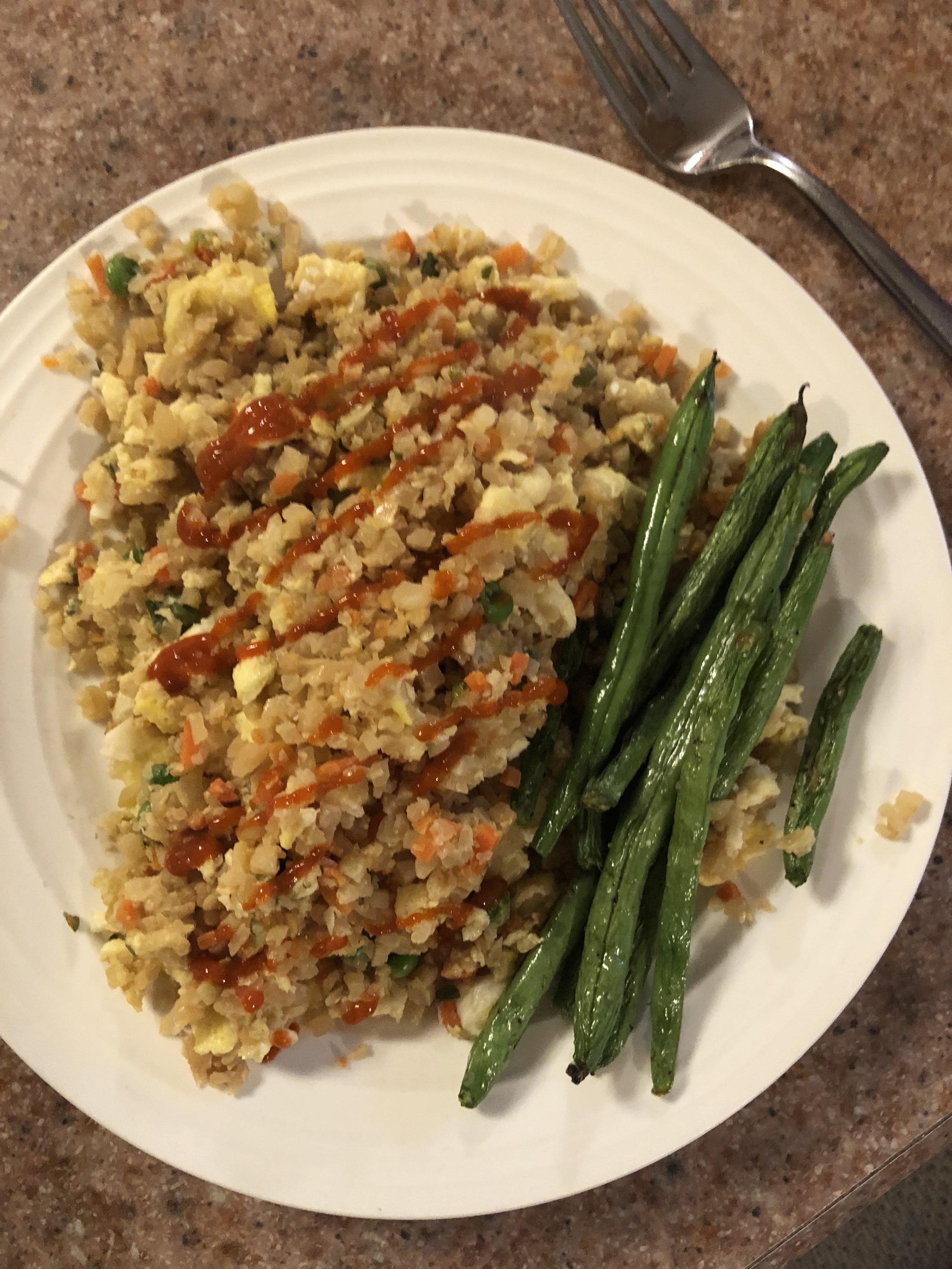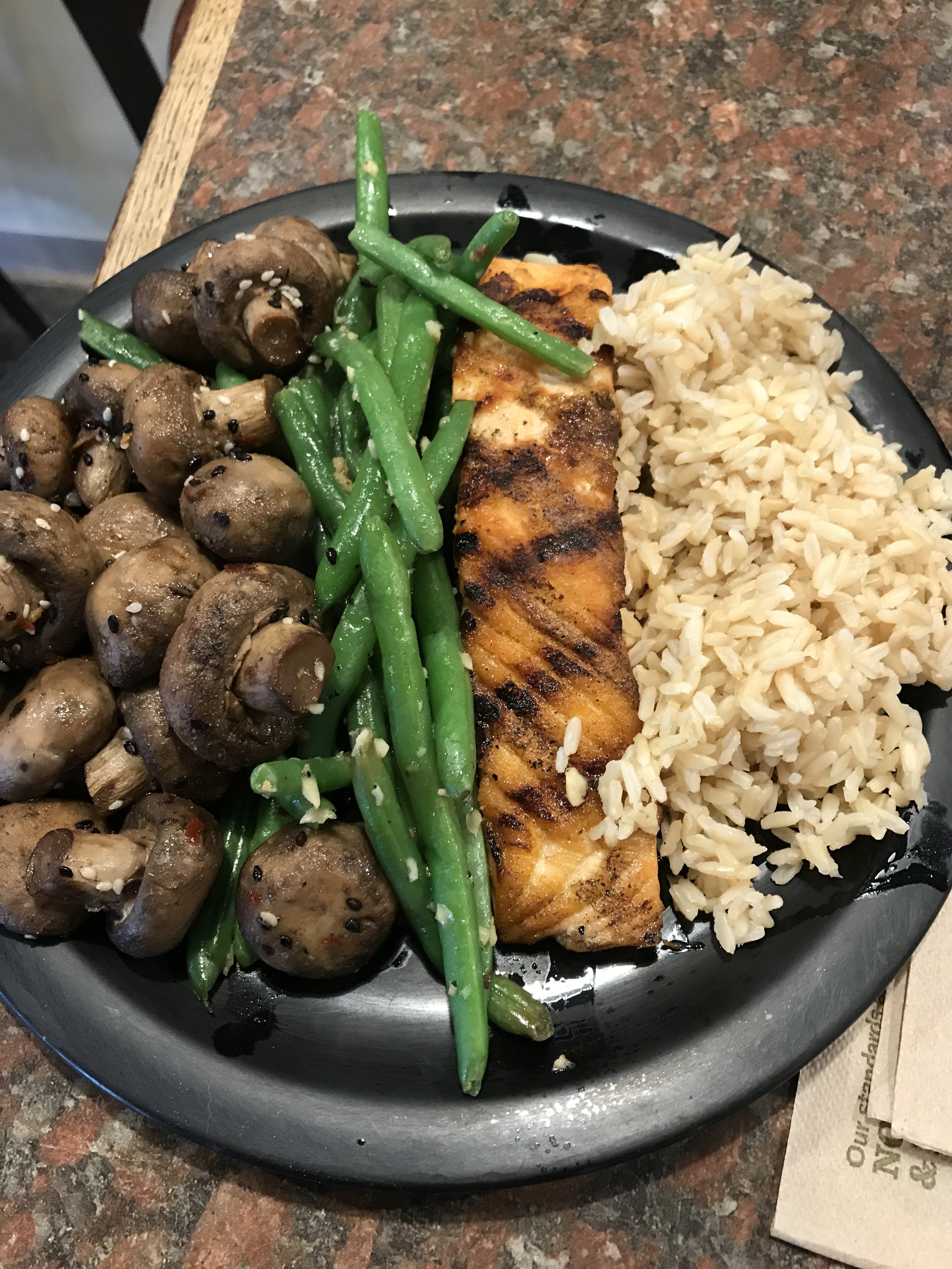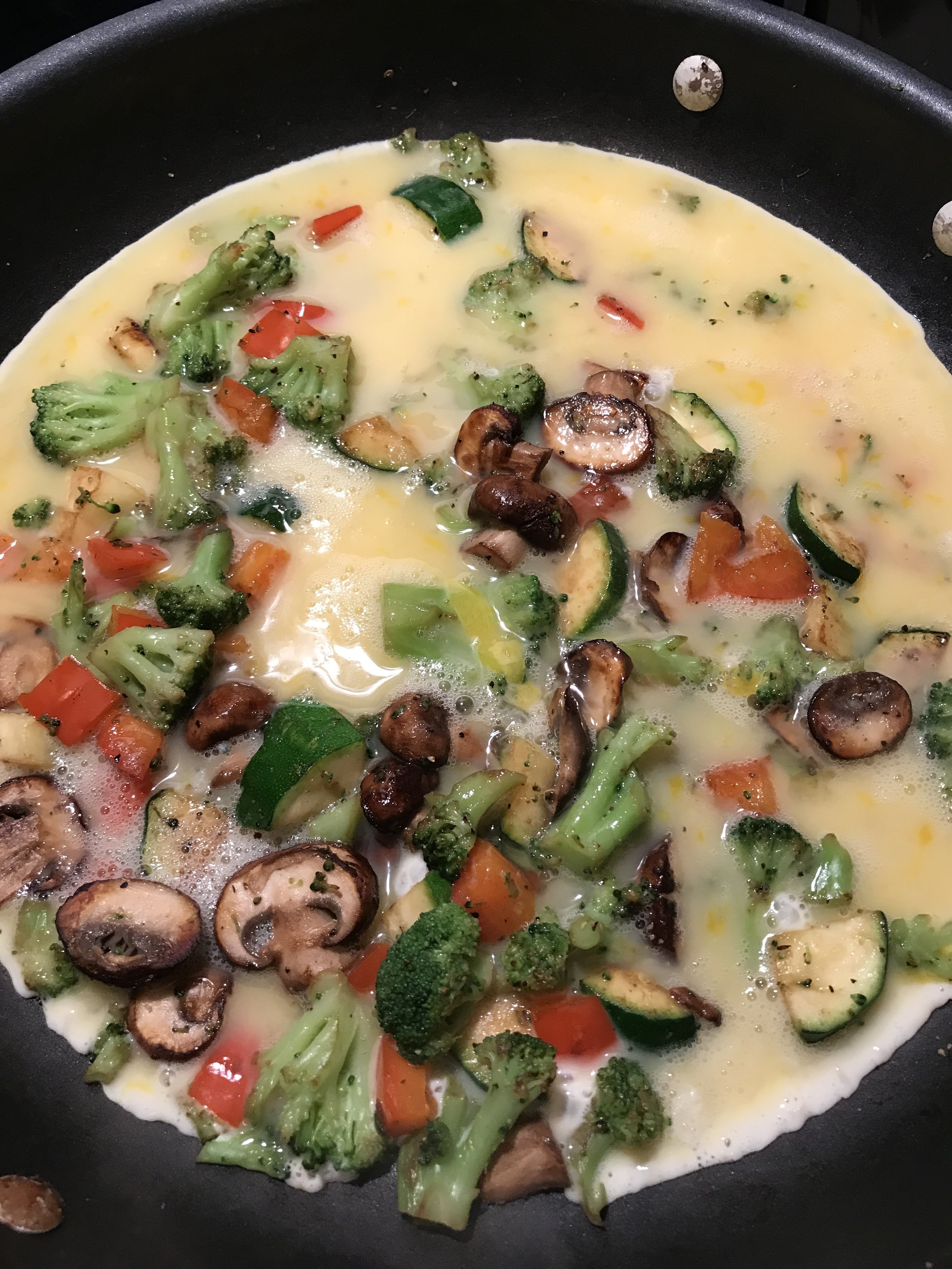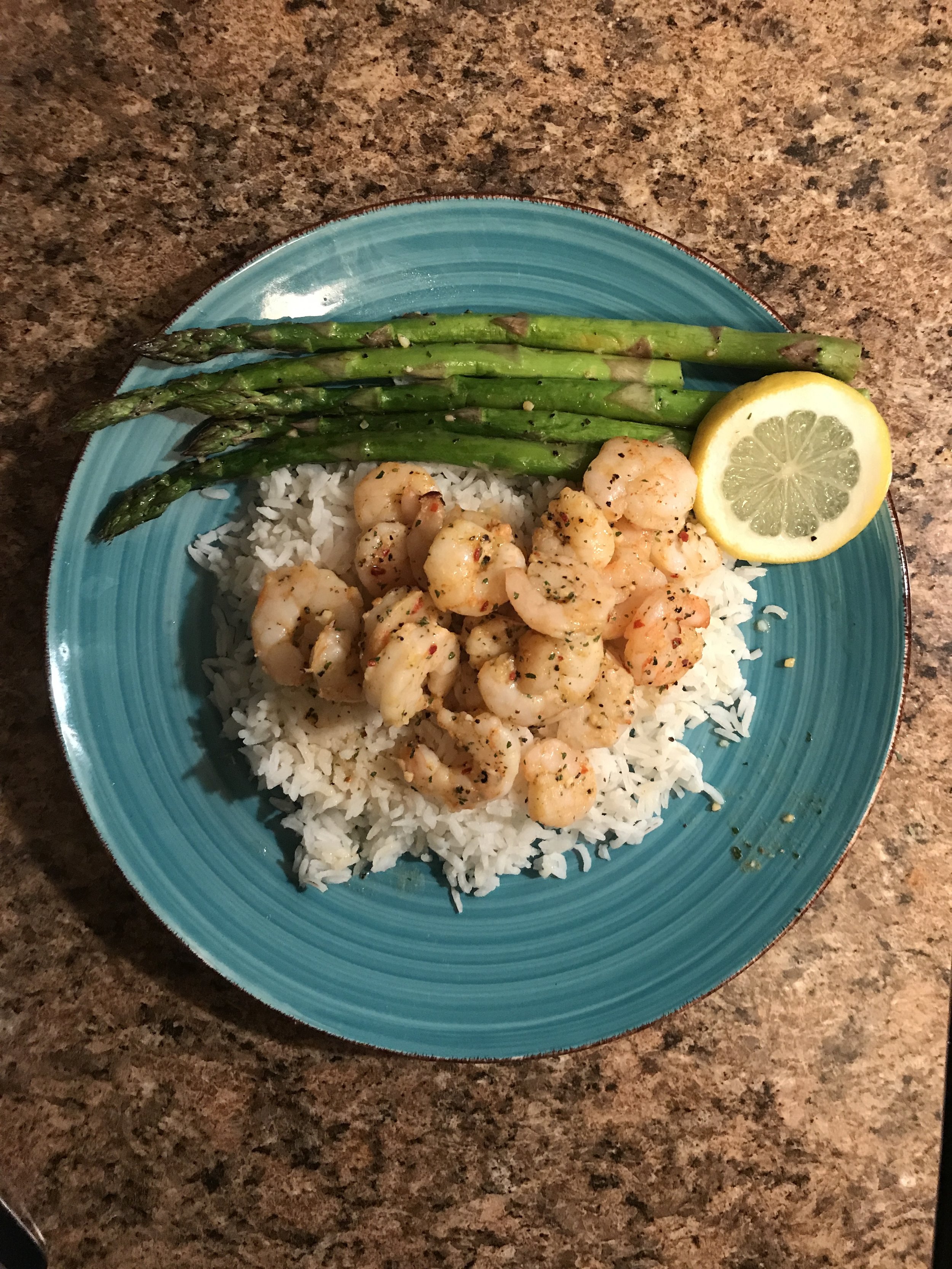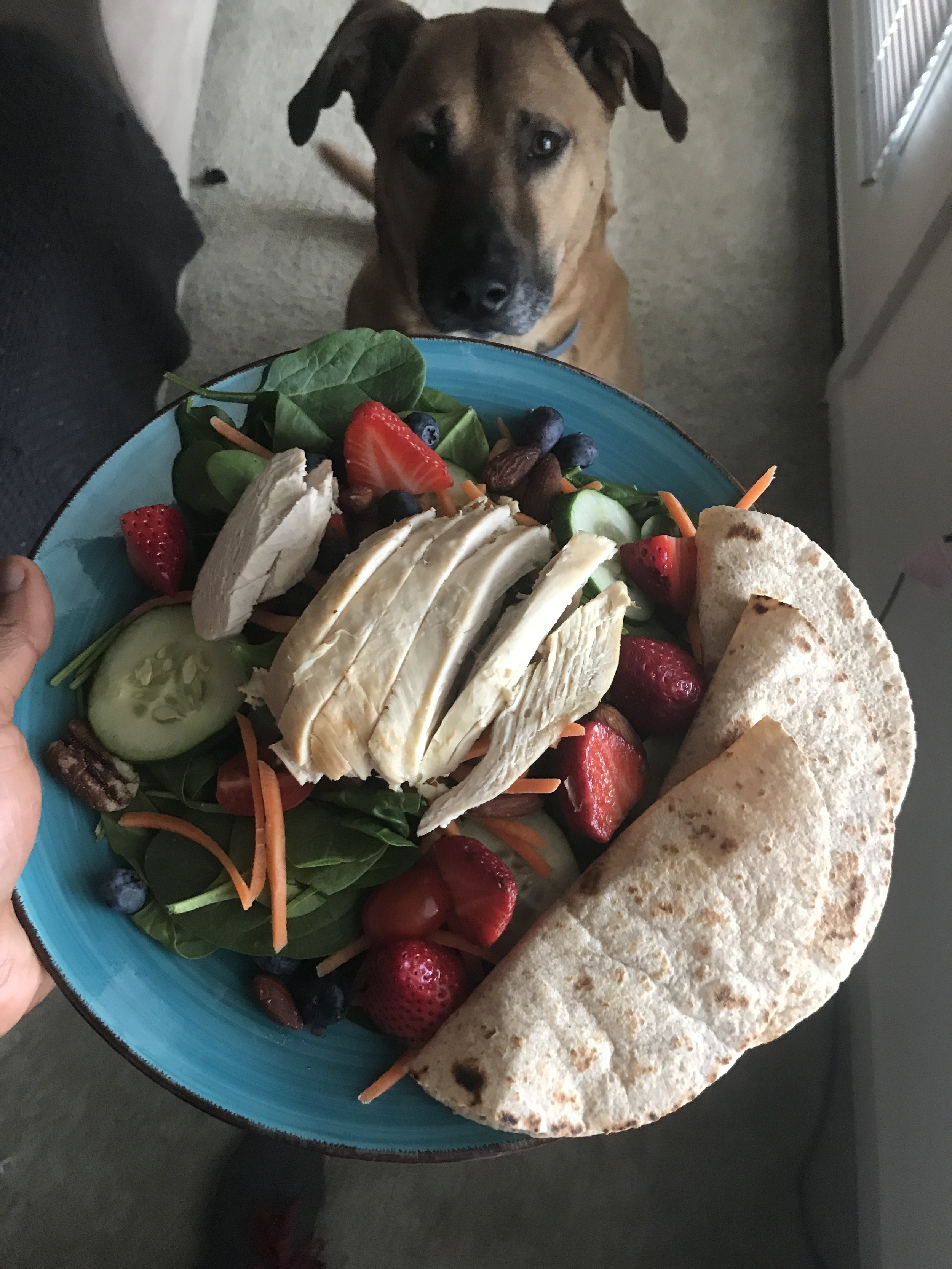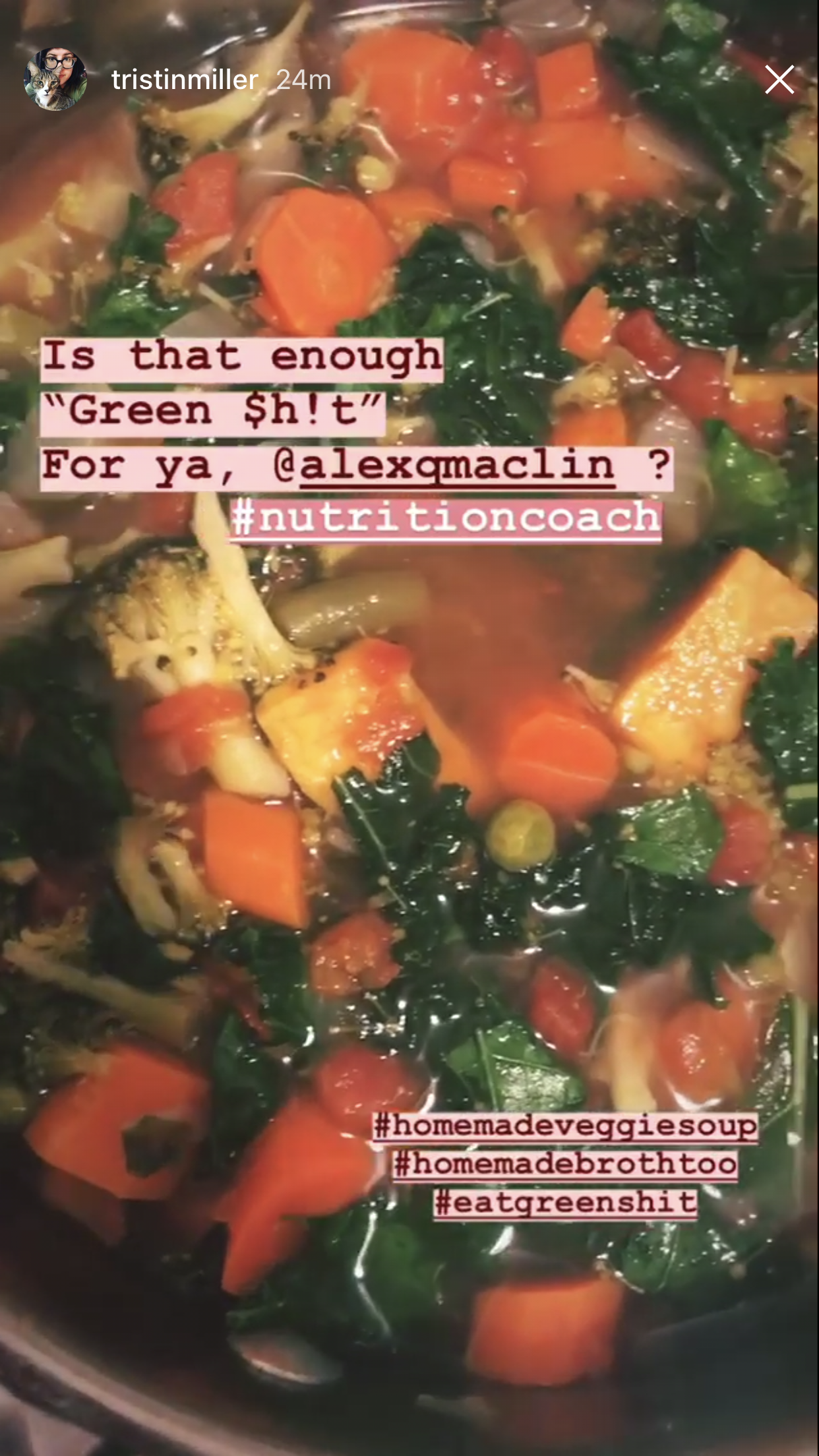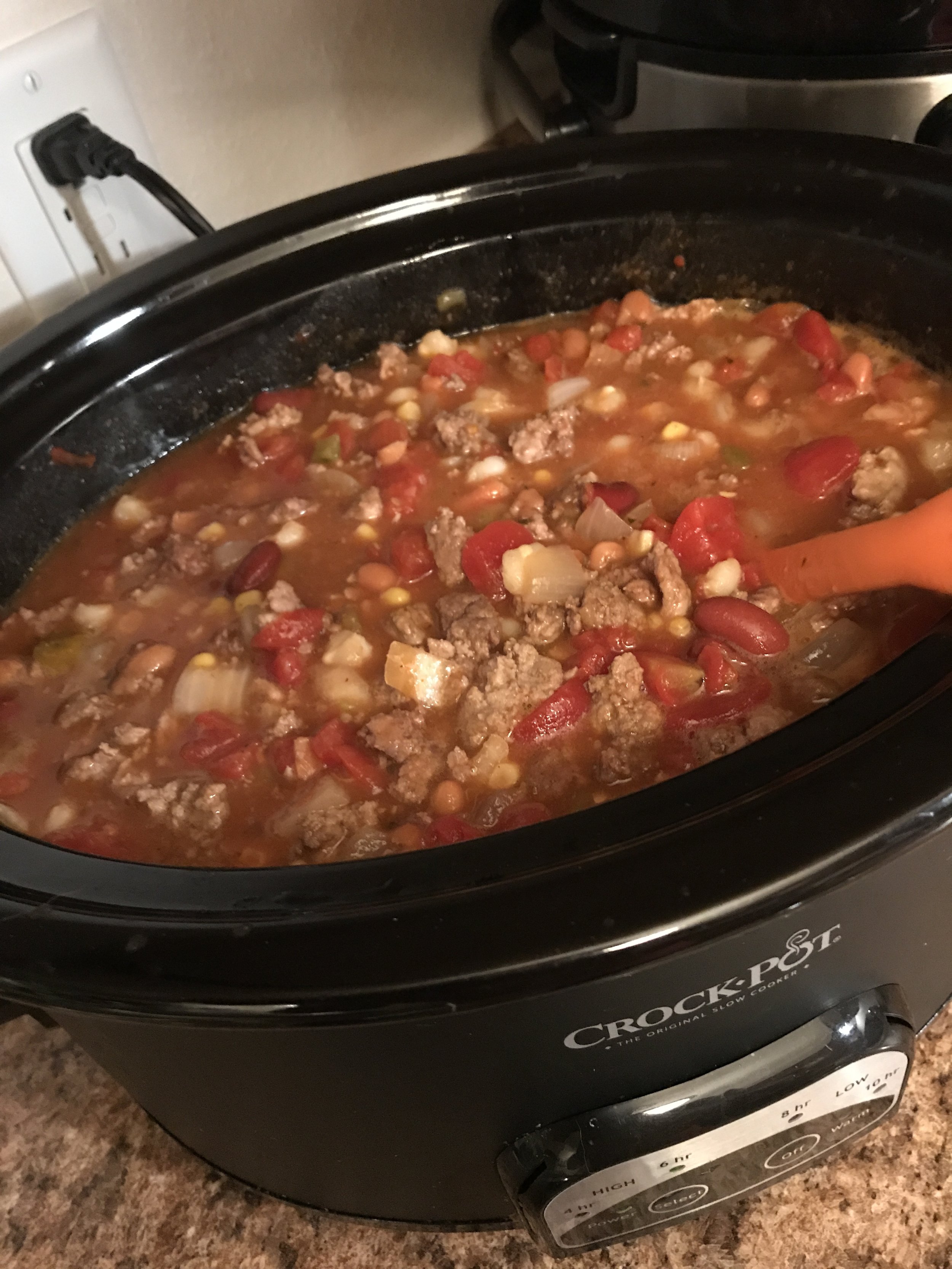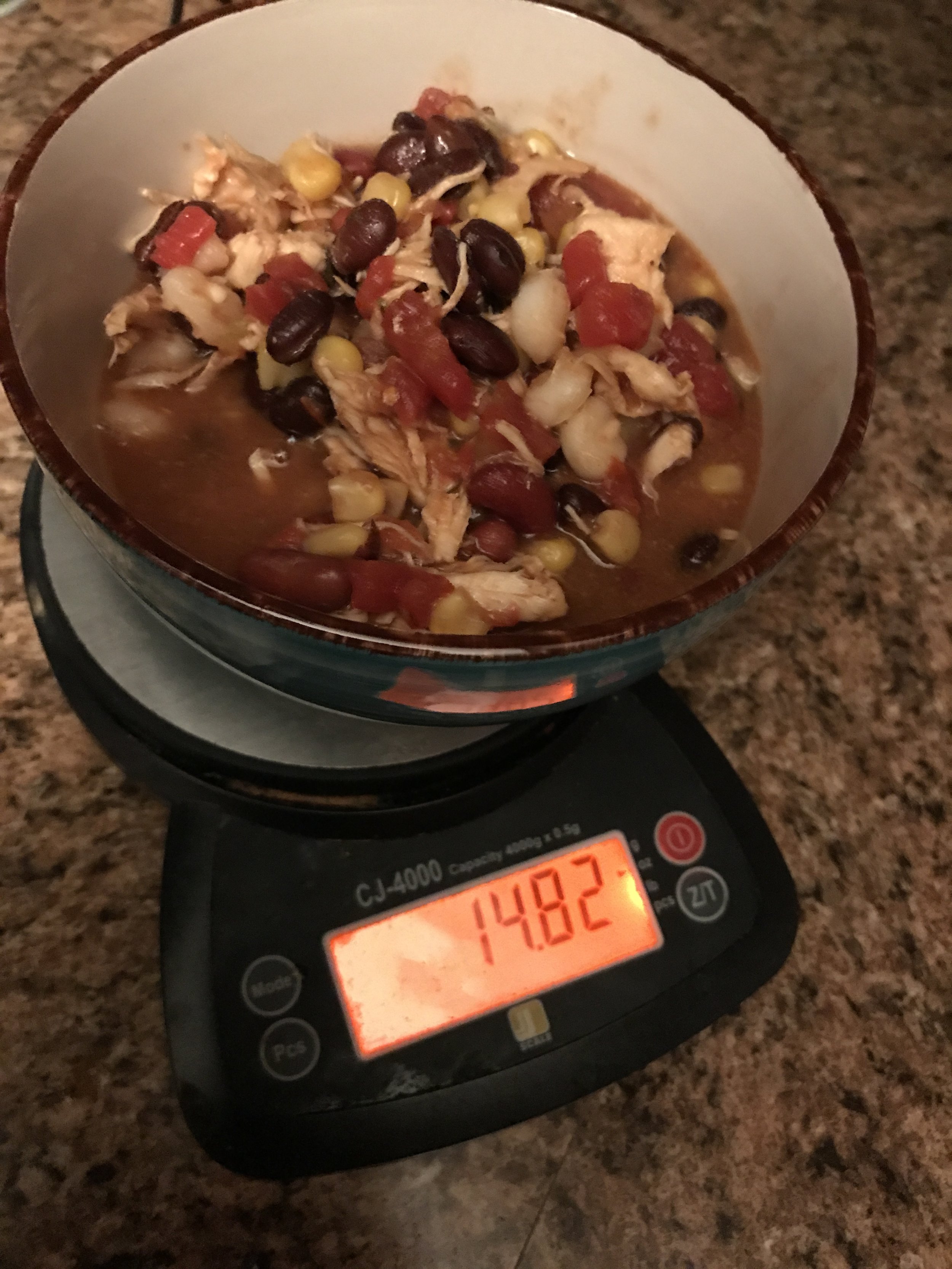I love big meals. There’s just something physically and mentally appealing knowing that you have the opportunity to eat an ENTIRE plate of food. Want to get on my bad side and put me in a foul mood? Put a daintily made plate in front of me with a bunch of empty space and tiny portions! That’s why I can’t really eat at those super fancy restaurants. I’d just be mad the entire time and want more food!
What the f*ck is this?!
Yeassss #bigbeautifulmeals
I love feeling satisfied after eating a meal. Otherwise, what’s the damn point? I hate eating a meal, immediately feeling hungry and then just counting the minutes until it’s time to eat again. Who wants to live like that? Not me, Jack!
The problem is that if you’re trying to lose fat and weight, you’ll likely need to drop some calories to put yourself into an energy deficit. People hear low-calorie and immediately think, “eat less food”. Now while that can be true, it doesn’t have to be true. You can certainly eat larger portions of foods and still lose weight and fat. You’ll just have to make different food choices and "eat for volume".
In this article, I’m going to teach you how to eat for volume, show you some of the best high-volume foods and share my personal strategies to maximize the amount of food you can put on your plate while keeping calories low. If you’re like me, love eating big-ass plates of food and feeling full and satisfied even if you’re eating substantially fewer calories, keep reading.
What is Eating for Volume?
As cool as it sounds, eating for volume doesn't mean eating an entire large pizza in one sitting. Eating for volume is a strategy to maximize the amount of food you can eat while simultaneously keeping your calorie intake as low as possible. This strategy works on two main principles:
Calories and physical food amount are not directly correlated. A pound of broccoli will contain considerably less calories than a pound of french fries.
The human stomach can only hold so much food at any one time.
If we prioritize eating foods lower in calorie, you'll have less space in your stomach for higher calorie foods. This will help you feel fuller even though you ate the same amount of food calorie-wise. This diagram illustrates this point:
Source: Precision Nutrition
Why Eat For Volume?
The obvious and most important reason to eat for volume is that you'll get to eat a lot more food even if your calorie intake needs to be low.
People seem to think that if you want to shed weight or fat you have to reduce the amount of food you eat. This isn't always the case. For example, you could eat 1 Quarter Pounder from McDonald's and still be hungry later or eat an entire plate of food, feel satisfied for hours and lose weight.
In my opinion, eating for volume is the #1 thing you can do to increase your dietary adherence to losing fat.
Diets inevitably fail because of one reason: hunger. If you're not satisfied and still hungry after your meal, you're almost guaranteed to reach for more food. Do that enough times, and you'll quickly knock yourself out of an energy deficit and be left wondering why you can't lose anymore.
Some other benefits of eating for volume:
Volume foods are nutrient-dense. You'll be getting lots of vitamins & minerals which will help improve health, energy levels, performance, sleep, and etc.
You'll get lots of fiber. This means better digestive health and better poops 💩
Many volume foods often contain lots of water so you'll have an easier time staying hydrated.
High-volume protein sources are high in protein. More muscles and better body composition! Yes!
It makes eating low-calorie mentally easier. Seeing a big plate of food is mentally more satisfying and rewarding.
The Best Foods to Help You Eat for Volume
Choose foods that are low-calorie, high in nutrients (vitamins & minerals), and will take up lots of space on your plate and in your belly.
Volume foods tend to soak up lots of water or are filled with air. Water is heavy, expands your stomach, and air increases the size of the food. Both are calorie free so the more air or water the food has, the better.
Foods higher in fiber are often more filling, bulkier, and lower in calorie. Choose foods that are high in fiber like vegetables, whole fruits, and root vegetables if you really want to pack your plate high.
Lean sources of protein with very little fat are also great high-volume foods. As a bonus, protein is the most satiating macronutrient and has a high thermic effect which means that eating protein will satisfy your hunger better than eating carbs or fat will and protein takes more energy to metabolize. This increase in energy expenditure can help you better maintain an energy deficit to lose body fat.
Here are some high-volume foods you can choose. This isn’t an all-inclusive list, but hopefully, you’ll get the idea of what kinds of foods to choose and build a big beautiful plate.
*All calories listed per 100g unless otherwise stated
Source: Google
Vegetables:
Broccoli (34 cal)
Cauliflower (25 cal)
Brussel Sprouts (43 cal)
Asparagus (20 cal)
Leafy Greens like Spinach, Kale, Bok Choy, Arugula and Lettuces (generally from 15-50 cal)
Artichokes (47 cal)
Mushrooms (22 cal)
Whole Green Beans "haricots verts" (31 cal)
Turnips (28 cal)
Cabbage (25 cal)
Bell Peppers (20 cal)
Carrots (41 cal)
Zucchini (17 cal)
Hard Squashes like Acorn (40 cal), Butternut (45 cal), or Spaghetti (31 cal)
Cucumber (16 cal)
Tomato (18 cal)
Pickles (11 cal)
Sauerkraut (19 cal)
Fruits:
Strawberries (33 cal)
Watermelon (30 cal)
Melon (34 cal)
Grapefruit (42 cal)
Oranges (47 cal)
Peach (39 cal)
Blueberries (57 cal)
Raspberries (53 cal)
Blackberries (43 cal)
Carbs:
Cooked Oatmeal (68 cal)
Boiled Potato (77 cal)
Lentils (116 cal)
Edamame (122 cal)
Green Peas (81 cal)
Air Popped Popcorn (1 cup = 31 cal)
High Fiber Tortillas (1 tortilla = 90 cal)
Shirataki noodles (3 oz dry = 2 cal)
Protein:
Egg whites (52 cal)
Nonfat Greek yogurt (59 cal)
Nonfat cottage cheese (72 cal)
99% lean ground turkey (115 cal)
Boneless, skinless chicken creast (165 cal)
Shrimp "MF SHRAMP” - as my friend @laurieking_in3 and I like to call it (106 cal)
Just remember that even though these foods are lower in calorie, you should still measure, portion and be mindful of the quantity of these foods just like you would with any food.
Eating for Volume Hacks & Strats
Add veggies to all of your plates
Add a bunch of vegetables (#greenshit) to everything you eat and you'll automatically add a ton more volume without adding a lot of calories. You can be obvious and give yourself an entree-sized portion at meals or get creative and sneak them in wherever possible.
Throw some veggies into your scrambled eggs for breakfast.
Make stir-fry with tons of veggies
Add veggie to pasta dishes
Bake veggies into a casserole
If you make a protein smoothie, add foods like spinach, kale or pumpkin.
Cook them and season them however you want. Just get them on your plate!
Swap carbs out for low calorie substitutes
Swap high-carb foods for lower-carb, veggie-based alternatives. For example instead of eating white rice, use cauliflower rice.
1 cup cooked white rice (205 cal) vs 1 cup cauliflower rice (25 cal)
Buy or make spiraled zucchini or spaghetti squash to use as a substitute for pasta dishes like spaghetti and meat sauce.
1 cup cooked whole wheat pasta (180 cal) vs 1 cup cooked Spaghetti Squash (42 Cal)
Substitute butternut squash for sweet potatoes.
100g sweet potato (86 cal) vs 100g butternut squash (45 Cal)
Make a big ol' salad
Get a bunch of lettuce or leafy greens.
Add some other colored veggies and fruits like bell peppers, tomato, strawberries, blueberries, carrots, and etc.
Sprinkle some seeds, nuts or a little avocado.
Throw some lean protein like grilled chicken breast, fish, shrimp or lean steak on the top and drizzle a little dressing to finish it off.
You now have a big ass, high-volume salad full of micronutrients that will keep you full for hours.
Drink less protein shakes, eat less protein bars and avoid liquid calories
Protein shakes are made with water which take up space in your stomach but you can always make a little more room in your stomach for liquids. Instead of doing protein shakes, choose whole-food protein sources that you have to chew and work to eat. Eating whole-food protein will slow you down and take up more space on your plate and in your stomach. Avoid protein bars like the plague. A tiny 200-300 calorie protein bar is ok in a pinch, but you could eat an entire bowl of greek yogurt, with berries instead. Lastly, avoid drinking your calories (milk, milk substitutes, fruit juice, and etc). Chew them instead. Mentally and physically you'll be more satisfied.
Pimp your oatmeal
Oatmeal is already a great high-volume food because oats soak up a lot of water. Try turning your side dish of plain and boring oatmeal into a giant, balanced meal by adding egg whites and a little fruit or veggies.
The egg whites will add more volume to the oatmeal and give it a nice, cake-like texture. I like to add some banana, blueberries and cinnamon to the mixture for bit of sweetness. To add even more volume and increase nutrient-density, add some grated zucchini, pumpkin or carrots. Pimp out your oatmeal and I promise you won't be hungry afterwards.
Here's a basic recipe for egg white oats you can start with and then tweak to make your own.
Make soups and stews
Studies have repeatedly shown in both adults (source) and children (source) that eating a low-calorie, vegetable-based soup or stew before the main course reduces calorie intake over the course of the meal. Makes total sense right? Eat a high-volume, liquid based food before eating and your stomach will get fuller leaving less room for the rest of the meal and dessert. Just from personal experience, this also works when soup or stew is the main meal. Eating stew also helps you eat slower (especially if it's hot), which then helps you perceive fullness faster.
Soups and stews are super-easy to make. Buy some bone broth (or make your own), toss a bunch of veggies and seasonings into the crockpot and make yourself a hearty soup or stew. Add some lean protein to the mix and you've got a balanced meal that will keep you full and satisfied. Just make sure you keep the stew broth-based, rather than cream-based if you're watching calories.
I hope this article gave you some ideas and insight on how to eat for volume. I'm telling you, this is a game-changer practice for fat loss. If you learn and implement volume-based eating, I can almost guarantee losing fat will be easier and more successful.
If you have any strategies or hacks you employ to volume eat, let me know in the comments below and feel free to tag me (@alexqmaclin) in any Instagram posts showing off some #bigbeautifulmeals.
Thanks for reading.
Cheers,
Alex
Interested in working with me?
I'm offering a free consult call for those want change their lives with better nutrition. To see how I can help you, click the button below to schedule your free 1-on-1 call.




